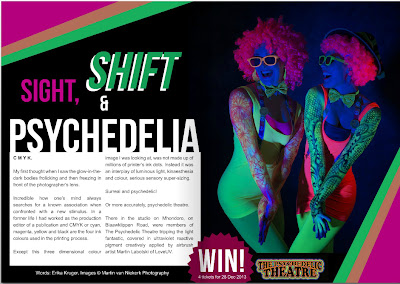‘So
which way would you like me to face?’
A
question every photographer about to shoot a professional portrait, is asked as
soon as the model arrives in the studio.
The
problem is that there is no simple answer to this seemingly simple question. Should
the photographer:
- Position
the client according to the lighting configuration he or she has set up to
achieve a particular outcome or because the location demands it?
- Accommodate
the client’s preference for a particular side? People often feel they have a good
side that looks better on a photo.
- Take into
account facial features that might make the image less aesthetically pleasing e.g.
turning the model’s head so that a larger eye is further away from the camera?
- Listen
to what neuro-anatomists and cognitive psychologists tell us about portraits?
What your subconscious knew but did not tell your conscious mind
Here
are 5 interesting facts about portraits that you probably don’t know. At least
not your conscious mind but if you had to dig up some old photographs, you see
that your subconscious had known a thing or two all along.
1. Most of
the time we choose to be photographed with the left side of our face, facing the
camera. Why? Not because of any cosmetic or physical attributes that we favour but
because the left side of our faces show more emotion than the right and we are
hard-wired to experience intense emotional responses more aesthetically
pleasing. According
to a study published in Experimental Brain Research the left side of the face shows more muscle movement in response to emotions. That is because
the right cerebral hemisphere tends to be more involved in the
perception and production of emotion than the left.1) And more emotion makes
for better portraits, the theory goes.
2. The left-side bias has been known to
naturalists and artists for a very long time. The theory of that which we seem to instinctively know about
portraits, has been the topic of neuro-anatomy and art theory for hundreds of
years. It was Darwin who first observed that the two sides of
the face do not move and express emotion in the same way. His observations have
since been confirmed by experimental and
physiological studies. 2) For example in their
study Turning the left cheek, researchers
McManus and Humphrey indicate that 60 % of portraits painted since the 16th
century show the left side of the sitter’s face. 3) We seem to prefer seeing
and rendering a person’s more emotional side in a painted portrait. And the
same goes for photographs.
3. But not
always! We seem to have a different face bias for self-portraits depending on
whether we are artists or non-artists. According to Bruno and Bartomini’s surveys of art
books and exhibitions, show the majority of artists featuring the right side
when composing a self-portrait, a phenomenon that is considered an art
convention. Historically, painting or drawing a self-portrait required working of
your own image reflected in a mirror. This method reverses the image you work
from hence the right side bias. Nowadays artists most probably work from photographs
which in the long is bound run to change the self-portrait posing conventions
taught at art school. 4) This is what neuropsychologists Nicola Bruno and Marco
Bertamini found when they observed people using smart phones to take ‘selfies’.
Non-artists prefer the left side more often than the right even if you have to
contort your body to get the shot. 5)
4. Portrait
type, social position and career choice also influence our choice of left or
right facing portraits. When we are posing for a more informal family
portrait when go for the more emotionally expressive left side. 2) But there are times when the sitter prefers to
not show their softer, sensitive sides. It might be for reasons of status, for
professional reasons or as a result of convention. Several studies have shown
that natural scientists, chemists and engineers tend to show their less
emotional right side ‘more in keeping with the stereotyped pose of a
professional rationalist’. 3) Academics in the human sciences e.g. language and
psychology departments tend to show the left side of the face probably feeling
more comfortable showing their most emotional aspect to the world, unlike the
engineers who want to ‘appear more rational and suggests that these hard
scientists seek to display themselves to the world as the unemotional clichés
of popular myth’. 3)
5. Sex may also help determine the cheek of choice - Male academics in the Churches tend to prefer showing the right cheek
while female academics tend to show the left cheek more often. It is possible
that the observed biases were the result of ingrained cultural and stereotypical
gender roles depicting women as more emotional than men 2)
References:














